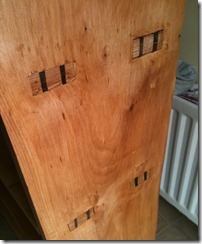The headline articles for the March/April 1996 edition of Oracle Magazine was Oracle’s first or early articles on Data Warhousing, including DW Architectures, what Oracle tools you can use, multi-dimensional analysis, Oracle Express and future directions of data warehouses.
Julie Gibbs, the editor of Oracle Magazine, wondered ‘What will be hot in 2005?’. Some of her predictions/suggestions were:
- Will Larry Ellison’s NC provide every home with a $500 internet box
- What will be the 3 biggest software companies and were any of them around in 1995
- How many people will use the internet everyday
- Will the internet be censored ? How and by whom ?
- Or will the internet be passe and will virtual reality be a reality
- What will be the size of the largest data warehouse
- Will Apple still exist
- Will you be reading your magazines in print or online
- Will your company have a woman CEO
- How many people will be telecommuting
- Will every desktop have built in video conferencing so that you can talk to your coworkers
Other articles included:
- Oracle Interoffice Suite was released and comprised Messaging, Document and Workflow servers based on Oracle 7.3. The product provided groupware functions, such as electronic mail, messaging, scheduling, directory services, document management, workflow and conferencing.
- Oracle 7.3 new features included Oracle Enterprise Manager, Oracle Software Manager, SQL*Net 2.3, advanced replication and Oracle ConText.
- How to rename your database. It is not always optimal for a database to keep the name it was born with. A step by step guide is given on how to do this without loosing any data!
- A case study is presented from NeXT Computer on how to audit and clean up your Oracle Applications data as you prepare to upgrade to Release 10. These included:
- Review Usernames and unused responsibilities
- Unused menus and menu options
- Are outdate concurrent requests being purged
- Unused printers
- Identify cluttered production libraries
- Unused custom concurrent processes
- Unused database objects
- Inactive vendors and invalid distribution sets
- Unused payment terms
- Closed bank accounts
- Protecting your budgets
- Obsolete journal sources
- Invalid price lists
- Unbooked orders and unclosed orders
- Unused payment terms, transaction types, units of measure and inactive sales people
- How to design a database for OLAP. Most of the following steps still stand today for designing your star-schemas
- Define the question (business function/area)
- Use Normalized logic
- Identify Dimensions
- Create Hierarchies
- Identify Attributes
- Identify Measures
- Add Calculations
- There was a review of the very first Oracle Magazine that was published in June 1987. Watch this space, as I will be posting the details soon.
To view the cover page and the table of contents click on the image at the top of this post or click here.
My Oracle Magazine Collection can be found here. You will find links to my blog posts on previous editions.












![image_thumb[2] image_thumb[2]](http://lh5.ggpht.com/-TqZhTM7MP-o/T5e7tpOTWtI/AAAAAAAAATs/AXe3VWqUN-I/image_thumb%25255B2%25255D_thumb%25255B1%25255D.png?imgmax=800)
![image_thumb[4] image_thumb[4]](http://lh6.ggpht.com/-rXGHjpzFu9A/T5e7vU1VX1I/AAAAAAAAAUA/nsY-9wIkhi0/image_thumb%25255B4%25255D_thumb%25255B1%25255D.png?imgmax=800)


